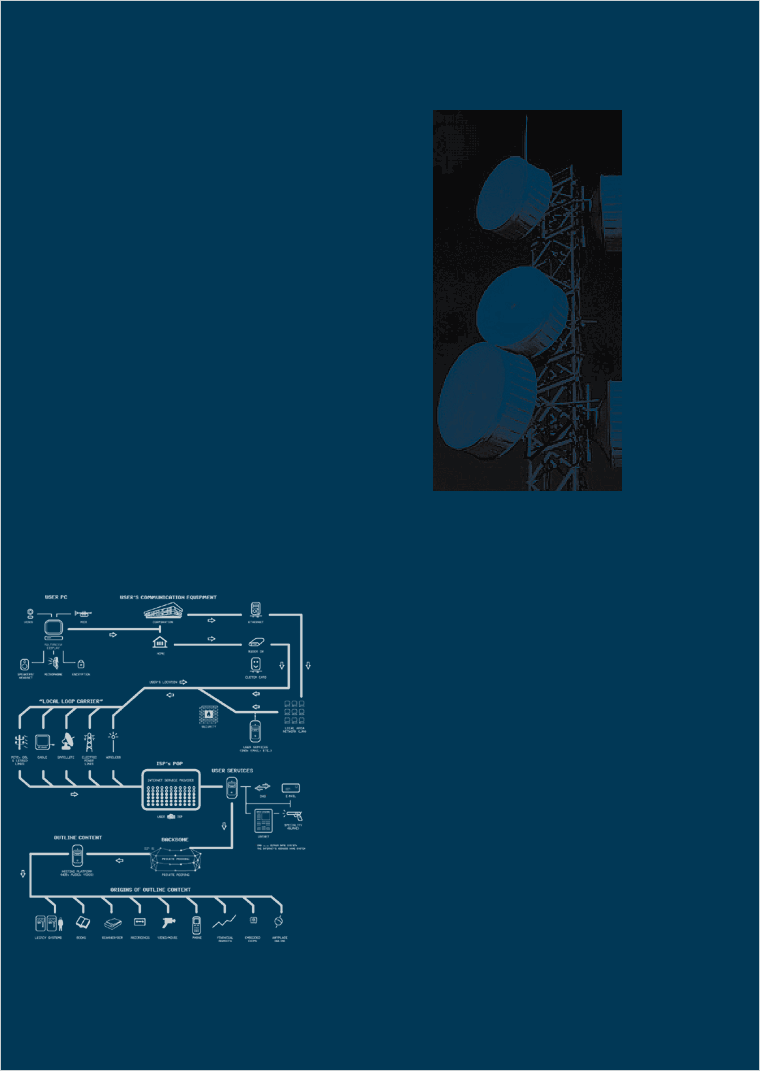Architectures of Control. The global network of data
networks, sometimes simply referred to as the Net, consists of loosely connected
and self-governed networks owned and run by corporations and institutions.
But the Net overall has no dedicated owner and is still administered by several
cooperative bodies with no strict, no defined hierarchy of authority. These
organisational structures for the administration of the Net are changing according
to the needs of corporations and of governments serving the needs of these
corporations.
"AOL can regulate its members because the architecture of AOL permits it."
(Lawrence Lessig, Harvard University)
New technologies facilitating the identification, monitoring and tracking
of Net users are now being introduced, so that the behaviour of users can
be controlled effectively.
Convergence. Digital technology allows the integration
of telecommunications with computing and audiovisual technologies. Emerging
new services serve as extensions of existing communication systems.
As technologies converge, so do businesses. Recently America Online, the world's
leading Internet service provider, merged with Time Warner, one of the world's
leading media corporations.
Asymmetric Connectivity. The promise of high-speed transmission
rates and of broadband connections to the Net, via cable, ADSL or satellite,
applies only to the downloading of information. Corporations want us as consumers,
not as producers or distributors of content.
Virtual Real Estate. Internet address names are a scare
resource, because no name can be used twice. Almost all common words found
in a standard English dictionary have already been registered for commercial
addresses. Consequently, the fight for Internet address names is one of the
most prominent battlegrounds on the Net. Reselling a name can be a lucrative
business: In 1999, business.com, bought by its former owner for $150.000,
was sold for $7,500.000. This is the highest price ever paid for a name. In
the future everyday words might replace Internet address names. Companies
such as Networds, Inc., already offer the necessary registration services.
Vulnerability.
"The idea of the Internet as a highly distributed, redundant global communications
system is a myth. Virtually all communications between countries take place
through a very small number of bottlenecks, and the available bandwidth isn't
that great." (Douglas Barnes)
These bottlenecks are the network connections to neighbouring countries. In many countries, only one such connection is available. But in principle, the Net is vulnerable in most parts of the world.
Supremacy of the United States.
- Almost all data traffic from Europe to other continents, such as Australia or Asia, is directed through
U.S. territory.
- Together, U.S. companies like AT&T and MCI Worldcom maintain
more than a half of all fibre optic cables.
- The world's largest Internet
service provider, America Online, Inc., serves every second Internet user.
- The world's future leader in satellite communication, Teledesic, Inc., will
probably own at least 50% of all communication satellites in 2004.
- Most
sites on the Net are located in the U. S.
Spooky Connections. Security and registration services are of crucial
importance to the Net. The most prominent players in these industries are
Verisign and Network Solutions. These two American companies maintain close
relations to U. S. secret agencies and the U. S. defence industry. They are
not the only ones. It is feared that these relations are used against other
nations and civil rights movements.


